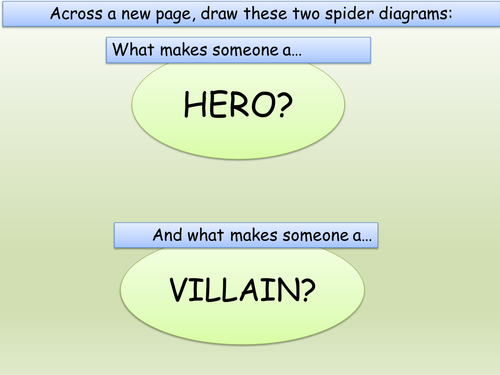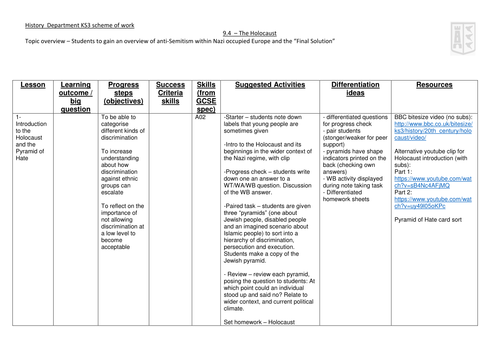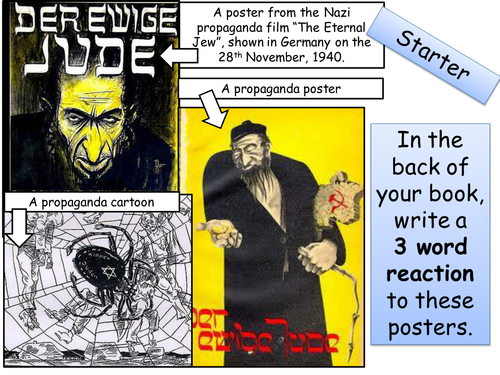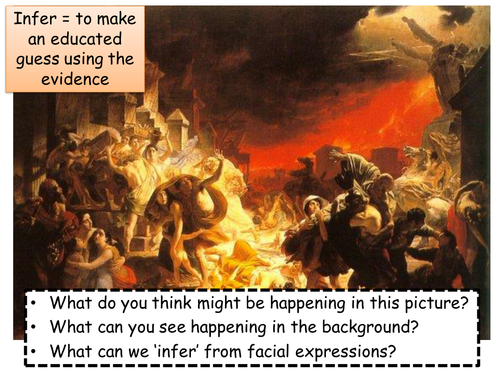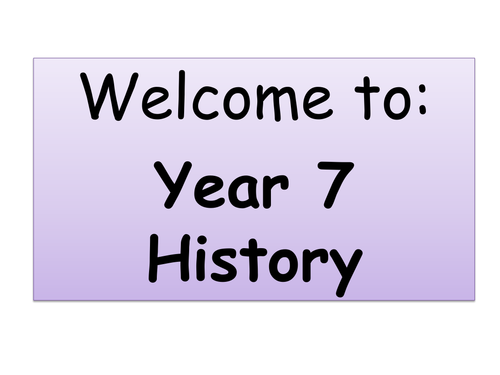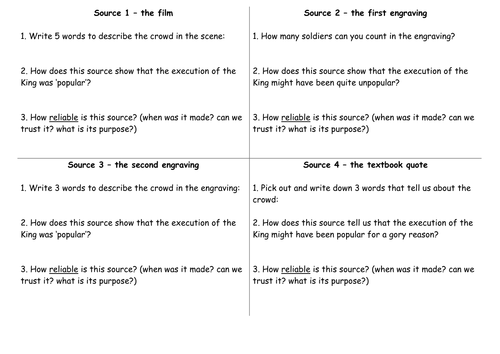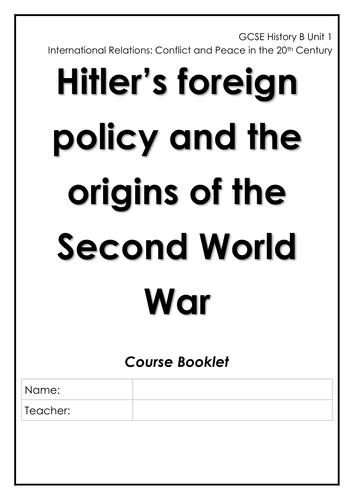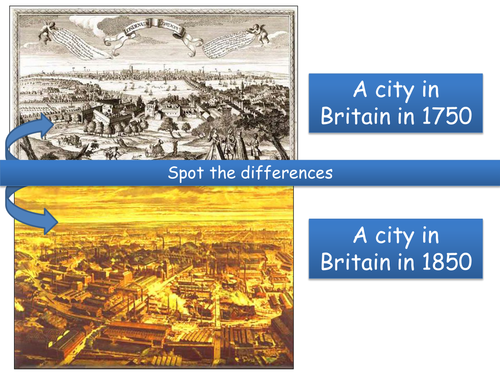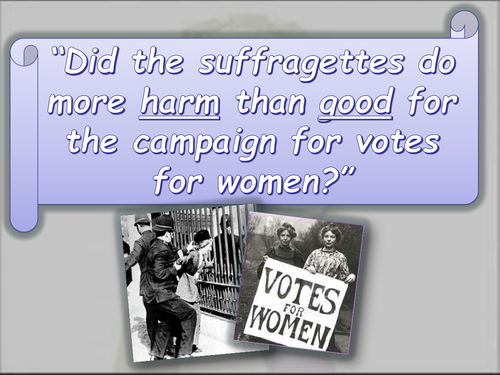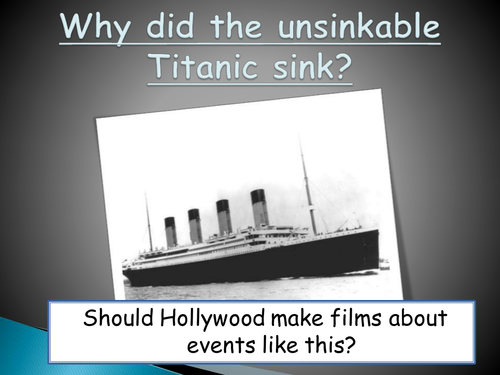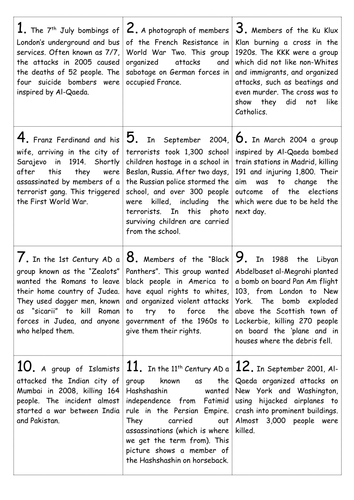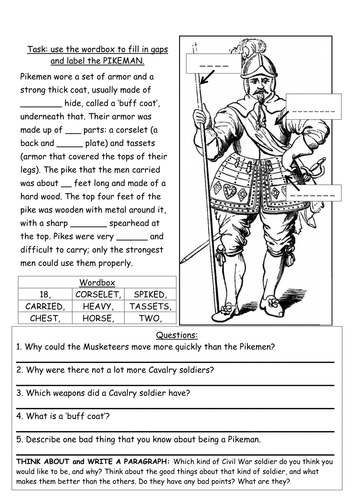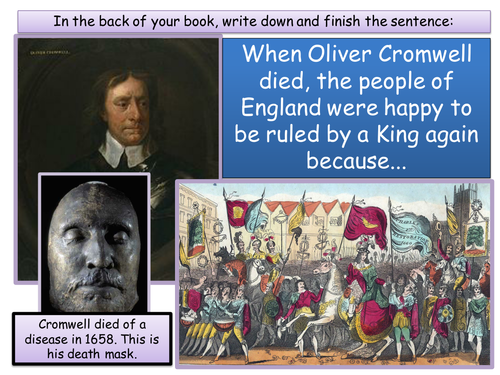
44Uploads
172k+Views
803k+Downloads
History

Oliver Cromwell - News report and assessment
Lesson that could follow trial and execution of King Charles I. Students are given a straight forward introduction to your main man Cromwell, they then work in groups to produce a drama (with their own scripts) of a breaking news story about Oliver Cromwell's actions. Students will need time to read the information they have been given, decide on roles, write scripts and rehearse. Students then watch eachother's reports and fill in an observer form. This could lead to an assessed piece of writing, debating on whether Cromwell was a hero or a villain when he ruled England.

Holocaust SOW
Approximately 15 lesson Holocaust SOW (give or take, depending on whether you choose to show a longer clip from either “The Pianist” or “Schindler’s List”), including a SOW with LO breakdown, PPts and resources (mainly on Word, with one PDF). There are two possible assessments included - based on the new GCSE source questions and 8 mark question. Mixture of ideas, from fantastic things already here on TES and resources from the HMD Trust.

Persecution and dehumanization of the Jewish race in Nazi Germany
Introductory lessons to the persecution and dehumanisation of the Jewish race in Nazi Germany, with a card sort of laws restricting the rights of Jewish people, and lesson 2 covers the boycott of Jewish shops, Kristallnacht and ghettoisation. When I use these lessons, I tend to finish lesson 2/start a third lesson with the first 30-40mins of Roman Polanski's "The Pianist", although with a disclaimer to students that some scenes are distressing.

Rationing and Rationing Propaganda
Two lessons (both of which were observed) introducing students to the need for rationing in Britain during WWII, and the way that rationing was marketed to the general public. To accompany the first lesson I brought rations of sugar, bacon, milk etc into school (in blank containers), which encouraged and engaged students to guess the amount of rations - although, I used a fake egg, to avoid potential disasters. The second lesson was a highly praised observation that engages students with team work, team captains and a creative challenge to create a propaganda slogan and poster of their own - the results are usually pleasantly surprising and often hilarious.

History homework projects - Years 7 to 9
Instruction sheets for major homework projects for students in Years 7 to 9. The projects could be set alongside the study of ancient Rome (year 7), the Tudors (year 8) and World War II (Year 9). Feel free to customise and adapt, especially the Year 9 homework proj (which mentions how my local area - Hebburn/Jarrow - was changed by WWII!), I just hope they might be helpful/useful as a starting off point.

Pompeii - information station carousel
Introduction to and investigation into the destruction of Pompeii in 79 C.E.
Straight forward carousel activity (print the instruction sheets and create four information stations for students to visit, they make a record of new information in their books). The instructions are differentiated into ‘must’, ‘should’ and ‘could’, but all tasks should introduce students to new and interesting information.

First lesson of Secondary History
A 4 lesson mini-scheme, which could be used as an introduction to History for year 7 students - or for you, if you haven't taught History before! Lessons 1 and 2 give focus to Chronology skills and the importance of Chronology to Historians. Lesson 3 trains students to enquire into sources and evidence, and there is an optional homework task (which could help you to get to know students) included. Lesson 4 is a rapid fire tour through accuracy, reliability, facts, opinion and bias.

Trial and execution of King Charles I
Lesson(s) that could follow on from English Civil War topic. Students are introduced to the idea of putting a King on trial, the main activity is then to recreate the trial, which has been divided up into 5 scenes. Students will need time to rehearse, make props and even learn lines - although I always let them use the scripts! Students then watch the whole play and fill in observer forms to put together the whole picture. Students can then decide/debate whether Charles ever had the opportunity of a fair trial. The lesson continues with Charles’ execution, a worksheet to complete using source analysis and a creative final task.

Booklet for students: Hitler’s foreign policy/Origins of the Second World War - GCSE Unit 1, Topic 3
Useful booklet to accompany lessons on the 'Hitler’s foreign policy and the origins of the Second World War' topic. Hope it comes in useful, and if you're using this along with some of the other booklets I have uploaded - I would suggest you get it printed in a different colour of paper!

Industrial Revolution, towns of the Industrial Revolution and the spread of Cholera
Series of 5 lessons (could take a little longer) on the topic of the Industrial Revolution. Lessons 1 and 2 are a simple and very visual introduction to the I.Rev, using a clip from the London 2012 Olympic opening ceremony. An optional homework is included in this lesson (included at the end of the resources), although it is all about how the North of England was revolutionised! It could be easily adapted though. Lesson 3 delves into the problems that were caused by workers flocking to the cities from the countryside, and gives focus to group work and a map from memory. Lesson 4 is an excellent murder mystery investigation - which was originally from TES resources and I have only adapted and souped it up a bit. Students love coming up with wild theories and enjoy being repulsed by the "Mystery source" (Water from the Broad st. pump - actually a jar of water with gravy granules in it, looks revolting). Lesson 5/5.5 is an assessment, with preparation and AFL for students.

Did the Suffragettes do more harm than good? 25 minute interview lesson
Powerpoint, accompanying worksheet for students to complete, evidence packs and a lesson plan for a 25 minute lesson for a mixed ability year 10 class, at the start of the their British History depth study. The class had not previously studied the suffrage movement, so this was intended to be an overview of the actions of the Suffragettes, the Suffragists and the actions of women during WWI, and was intended to help students to make an initial decision about which action was the most effective in women gaining the vote. For the lesson, I glued the evidence packs onto sugar paper and had students move round the packs of evidence after 5mins. I glued source C onto the back of the paper, as the intention was to use that source to challenge the most able students, encouraging them to analyse its provenance as well as its content.

Child Labor during the Industrial Revolution, a mythbreaking enquiry
An enquiry lesson on the topic of child labour in factories of the Industrial Revolution. The investigation should encourage students to question their assumptions about the role of children in the I.Rev. To create the information stations, print out slides 10 - 15.

End of WWII and the dropping of the Atomic bomb
2 lessons building towards an assessed piece of writing - "Was the dropping of the Atomic bomb on Hiroshima justified?" Lesson 1 covers the end of WWII in Europe, and highlights America's role in WWII and the island hopping campaign - excellent video from Crash Course World History is hyper linked. Students will need to watch the BBC worldwide documentary on the dropping of the Atomic bomb, which should be available in clips on Youtube. Lesson 2 gives a significant amount of focus to AFL and preparing for an assessment, students work in pairs to analyse and level paragraphs and then create a bubble-map which will help them to come to an ultimate decision about the dropping of the Atomic bomb. A homework task is included, assuming that Lesson 2 will take a class over two (possibly 3) lessons.

The attack on Pearl Harbor
Lesson that could be taught as part of WWII topic. Students are prompted to debate what causes wars, are introduced to the actions of Japan at Pearl Harbour and analyse Primary and Secondary sources. As part of the lesson, you could show a clip from a Japanese propaganda film, which was shown to the Japanese public following the attack, which could prompt discussion about the intention of propaganda. Additionally, one of the sources is a short clip from Michael Bay's "Pearl Harbor", which is available on Youtube. Plenary recaps starter question about the causes of war, with optional final slide of comparative images, the first being the destruction at Pearl Harbour followed by the flattened city of Hiroshima.

Booklet for students: Peacemaking 1918–1919 and the League of Nations
Booklet to accompany lessons on GCSE Unit 1, Topic 2: Peacemaking 1918–1919 and the League of Nations.

The Titanic Disaster - who was to blame?
A Ppt that covers potentially 4+ lessons on the Titanic disaster, building towards an assessment. Ppt includes an introduction to the Titanic, background activity, an analysis of James Cameron's version of the sinking (which will require clips from the film to be shown) and leads students to make their own decision about who was ultimately to blame for the disaster and loss of life. This short topic could end with an assessed piece of writing in which students make their own decision about assigning blame (an introduction to the assessment and differentiated writing frames are included).

Evacuation during WWII - perfect for cover
Lesson could form part of the study of the Home Front during WWII, with focus on the topic of Evacuation and the experience of three evacuees. Simple introduction to the reasons behind evacuation with an accessible main activity that focuses on literacy and independent working. Would be perfect for a cover lesson, and the A3 sheet has two creative extension activities on the back. The Ppt also contains a link to a video of inner-city London Primary school students reading the letters of evacuee children of matching ages, which could prompt a discussion about how young people in our society would cope (better or worse?) with evacuation. Extension letter writing activity is also included on Ppt.

Terrorism through time (Roman and Tudor)
Lesson that works well at the start of an investigation into Terrorism, and would be well suited for higher ability students. The'cut and stick' starter could be done in pairs or groups, and could be extended into creating a tension graph and comparing this with other pairs/groups, which could open into a debate. Extension activities to stretch and challenge on the back of the worksheet.

Soldiers and battles of the English Civil War
Lesson 1 is a straight forward introduction to the different types of soldiers who fought at the Battles of the ECW, and students complete information sheets and make judgements about the strengths and weaknesses of the soldiers. It could follow on from an introduction lesson about the causes of the ECW, although the starter sets up the idea of opposing factions and views.Lesson 2 is a group working lesson, designed to encourage students to teach eachother about the major battles of the ECW. This worked with a low/mixed ability year 8 class with support, and I have included a differentiated log sheet. Careful grouping would help students to support one another. An extension of completing a tension graph on the back of the log sheet is an option for more able students.

King Charles II, Restoration England and the Glorious Revolution
Lesson that could follow on from Oliver Cromwell topic. The first lesson gives students an opportunity to consolidate the story of the demise of Cromwell and the unlikely rise of Charles II, with an activity on the subject of the Declaration of Breda. The second lesson gives focus to Restoration England and the changes brought in under King Charles II. (Students seem to particularly enjoy creating the invitation to his birthday party.) This then leads on to the Glorious Revolution, in which students create a simple comic strip of a simplified version of events during the GR, gathering the information from the Ppt which moves on and circulates without being clicked, which frustrates students intensely but does get them to focus on the story and help each other. - NOW with the 6 changes Charles II brought in!

